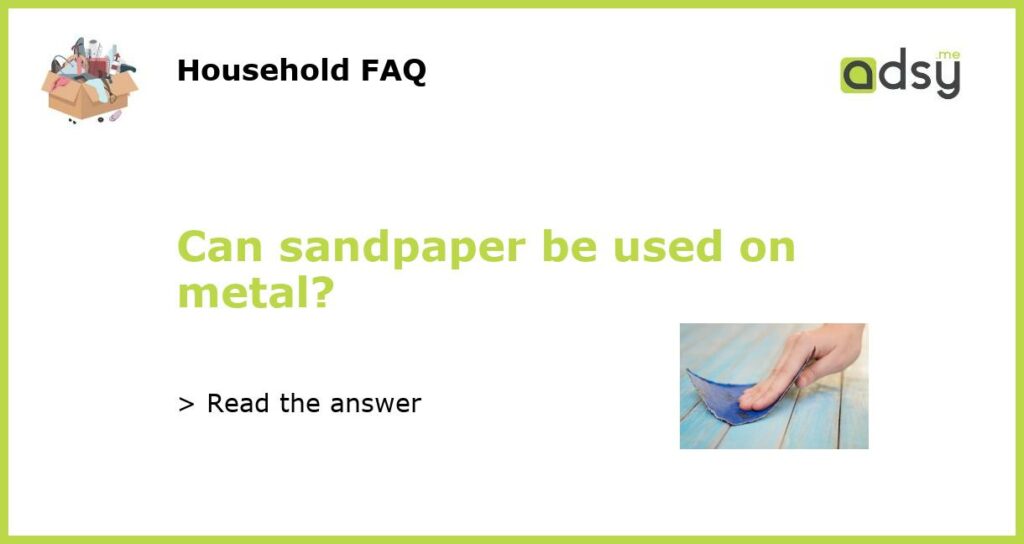Can sandpaper be used on metal?
Sandpaper is a versatile tool that is commonly used for sanding wood, but can it be used on metal as well? The answer is yes, sandpaper can be used on metal to remove rust, smooth out rough edges, and prepare the surface for painting or welding. However, it is important to choose the right type of sandpaper and use the correct technique to achieve the best results.
Choosing the right sandpaper for metal
When using sandpaper on metal, it is important to use the right grit and abrasive material to ensure effective and safe cleaning or sanding. The grit number on sandpaper indicates the size of the abrasive particles. For metal, it is generally recommended to start with a coarse grit, such as 60 or 80, to remove heavy rust or paint. As the surface becomes smoother, you can progress to a finer grit, such as 120 or 220, for a smoother finish.
There are different types of abrasive materials used in sandpaper, including aluminum oxide, garnet, and silicon carbide. Aluminum oxide is a common choice for sanding metal as it is durable and can effectively remove rust and paint. Silicon carbide sandpaper is more aggressive and can be used for heavier tasks like shaping metal. Garnet sandpaper is less aggressive and may be suitable for finishing or light sanding on metal.
Using sandpaper on metal
Before using sandpaper on metal, it is important to prepare the surface by cleaning off any dirt, grease, or loose debris. This can be done using a solvent or degreaser. Once the surface is clean, you can start sanding.
When sanding metal, it is important to use even and consistent pressure to avoid creating uneven surfaces. Move the sandpaper back and forth in a straight line, following the direction of the metal grain if visible. This will help to achieve a smoother finish. Use a circular or random motion if there is no visible grain.
Regularly check the surface to see if the desired result has been achieved. If necessary, switch to a finer grit sandpaper as the surface becomes smoother. It is important to avoid using excessive force or pressing too hard on the sandpaper, as this can lead to gouging or damaging the metal surface.
When not to use sandpaper on metal
While sandpaper can be used to effectively clean or smooth metal surfaces, there are certain situations where it is not recommended. For example, sanding on delicate or precision metal parts may cause damage or alter their dimensions. In such cases, it is better to use a gentler method like chemical cleaning or abrasive brushes.
Additionally, sandpaper should not be used on metal surfaces that are coated with protective layers such as anodizing or galvanization, as this can remove the protective coating and expose the metal to corrosion.
Other methods for metal surface preparation
Aside from sandpaper, there are other methods that can be used for cleaning or preparing metal surfaces. These include wire brushing, chemical cleaning, abrasive blasting, and grinding. The choice of method depends on the type and condition of the metal, as well as the desired outcome.
Wire brushing involves using a wire brush or wheel to remove rust or loose paint from metal surfaces. Chemical cleaning uses solvents or acid-based products to dissolve or remove contaminants from the surface. Abrasive blasting, also known as sandblasting, uses compressed air to propel abrasive particles against the metal surface. Grinding is a method that uses a grinding wheel or disc to remove unwanted material from the surface.
Before choosing a method, it is important to consider factors such as the size and accessibility of the surface, the type of metal, and the level of cleaning or preparation required.






